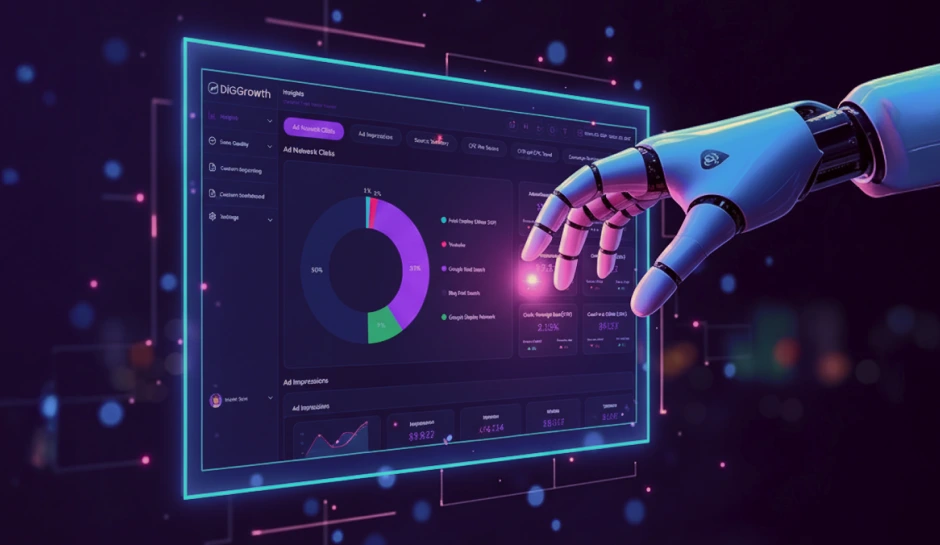
Decoding Revenue Attribution: The Bedrock of Data-Driven Success
Revenue attribution is a pivotal strategy for optimizing marketing efforts and maximizing ROI. By analyzing the customer journey and leveraging advanced models like Multi-Touch Attribution and Marketing Mix Modeling, businesses can pinpoint the most impactful touchpoints. Integrating machine learning further refines insights, guiding data-driven decisions that fuel sustainable revenue growth and marketing success.
Imagine a bridge spanning the chasm between marketing efforts and revenue generation; Revenue Attribution is precisely that link. This strategic approach assigns credit to the various marketing touchpoints across a customer’s journey that ultimately leads to a sale. Delving deeper, Revenue Attribution Analytics emerges as the compass that guides businesses through the labyrinth of data to pinpoint how each touchpoint contributes to sales.
A robust analytics system comprises key components such as the identification of marketing channels, customer interaction tracking, and conversion point analysis. This constellation of elements functions collectively to provide a panoramic view of marketing effectiveness.
At the heart of this system lies the judicious exploitation of data. By scrutinizing customer interactions with great precision, these analytics illuminate which areas within the marketing strategy ignite the conversion spark. An adept utilization of data not only capacitates companies to recognize the efficacy of each marketing initiative but also propels informed decision-making to optimize return on investment.
With every data point acting as a puzzle piece, Revenue Attribution Analytics is the adept artisan turning these individual pieces into a coherent, strategic masterpiece-enabling business to orchestrate a marketing symphony that resonates with the sweet sound of revenue growth.
Assessing Channel Performance through Revenue Attribution
Digital marketers routinely analyze performance metrics across different channels to determine the most effective strategies for investment. By assessing channel performance, businesses refine their marketing tactics, allocating resources to the most profitable channels.
Importance of Channel Analysis in Marketing Strategies
Channel analysis offers insights into where marketing efforts are generating revenue. Advertisers are better equipped to streamline campaigns and enhance customer journeys when they understand each channel’s impact on sales.
Understanding Multi-Touch Attribution (MTA) for Channel Effectiveness
Multi-Touch Attribution provides a comprehensive view of the customer journey, recognizing that multiple marketing touchpoints contribute to conversions. MTA models allocate credit to several channels involved in a customer’s path to purchase, acknowledging the complexity of buying behavior.
Pro Tip- Use Multi-Touch Attribution (MTA) to assess the contribution of each channel across the entire customer journey. This will help you identify which touchpoints are driving conversions and enable you to allocate your marketing budget more effectively to the most impactful channels.
Tracking and Optimizing Sales through Advanced Attribution Models
Conversion tracking stands as the foundation of understanding the customer journey from lead to revenue. This involves meticulously monitoring various touchpoints a prospect interacts with before converting into a paying customer. As simple as this sounds, nuances exist that require in-depth analysis and sophisticated tracking mechanisms.
Businesses seeking to optimize their sales processes must delve into advanced attribution models to make informed strategic decisions.
Incorporating Unified Marketing Measurement allows for a holistic view of marketing efforts and their direct impact on sales. UMM synthesizes aggregate data from disparate channels, providing a more comprehensive assessment of how each marketing decision contributes to overall revenue. Analysts relying on this approach are better equipped to pinpoint successful strategies and allocate resources effectively.
Machine learning emerges as a pivotal tool in refining sales funnel analysis. By utilizing algorithms capable of processing vast amounts of data, companies can identify patterns and predict future customer behaviors with increased accuracy.
Sales funnel analysis powered by machine learning not only spotlights effective marketing tactics but also anticipates potential purchase drop-off points, allowing firms to tailor their approach to minimize these risks.
- Advanced attribution models decode the complexity of multi-channel interactions.
- Unified Marketing Measurement consolidates insights across all marketing platforms.
- Machine Learning equips decision-makers with predictive capabilities for strategic planning.
Adapting to advanced attribution models propels forward-thinking businesses beyond conventional analytics. Sales funnel optimization becomes less about guesswork and more about data-driven precision, inevitably leading to sustained revenue growth and return on investment. Consider how
Machine Learning could unveil hidden aspects of your sales cycle, or how UMM might redefine your understanding of channel effectiveness.
Pro Tip- By combining predictive analytics with Unified Marketing Measurement (UMM), you can optimize multi-channel interactions, predict customer behaviors, and make data-driven adjustments to minimize drop-off points, boosting overall revenue and ROI.
Customer Purchasing Patterns: A Driver for Revenue Attribution
Understanding customer purchasing patterns provides invaluable insights that drive revenue attribution. By mapping the customer journey, enterprises gain visibility into the critical junctures where consumer interactions translate into sales. This mapping acts as a foundational element, clarifying where marketing efforts should be concentrated for maximum return on investment.
The Link Between Customer Journey Mapping and Revenue
Analyzing the customer journey reveals not just the paths taken, but also the touchpoints that influence purchasing decisions. Such analysis aligns marketing strategies with consumer behavior, ensuring that resources are allocated to the most effective campaigns and channels.
Businesses leverage this data to apportion revenue across different marketing touchpoints, delivering a clear picture of which interactions contribute to sales.
Identifying Key Purchasing Touchpoints via Campaign Performance Analysis
Campaign performance analysis pinpoints the key touchpoints that lead to conversions. By dissecting campaign data, companies uncover the specific content, ads, and outreach that resonate with their audiences. Forming a direct correlation between these touchpoints and subsequent purchases, this analytic process enhances understanding of the customer’s decision-making process.
Estimating Customer Lifetime Value (CLV) to Predict Revenue Streams
Customer Lifetime Value estimation forecasts long-term profitability from client relationships. This metric incorporates historical data, past purchase behaviors, and customer demographics to project future earnings. Estimating CLV allows businesses to not only gauge the current effectiveness of marketing tactics but also to strategize for sustained growth by nurturing the most profitable customer segments.
Pro Tip- Leverage campaign performance analysis to pinpoint high-converting touchpoints and use Customer Lifetime Value (CLV) to prioritize nurturing profitable customer segments, ensuring targeted and sustainable revenue growth.
The Role of Marketing Mix Modeling (MMM) in Revenue Attribution
Marketing Mix Modeling (MMM) stands as a quintessential analytical tool for projecting revenue outcomes based on historical data and marketing variables. As a pillar in revenue attribution analytics, MMM examines the relationship between marketing efforts and sales performance. By dissecting past marketing activities, spending patterns, and contextual factors such as economic conditions or competitor actions, MMM can identify the effectiveness of each component in the marketing mix.
A harmonized marketing mix prompts optimized revenue generation. Utilizing MMM reveals critical insights into how adjusting individual elements of the marketing strategy can influence overall financial results. Decisions on where to allocate budget become clearer when marketers understand how channels like paid media, social media, events, or even less quantifiable factors such as brand equity, contribute to sales.
Integrating Data Integration Strategies for Holistic MMM Insights
Data lies at the core of effective MMM analysis, necessitating robust integration strategies to yield comprehensive insights. The integration of diverse data streams-spanning digital touchpoints, customer demographics, sales channels, and media spending a more accurate and panoramic view of marketing’s impact on revenue.
Advanced data integration tactics allow for the inclusion of both structured and unstructured data, offering a detailed tapestry of information upon which to build predictive models and drive revenue attribution analytics forward.
The synthesis of cross-channel data, facilitated by sophisticated integration methods, equips businesses with the ability to fine-tune their marketing efforts. This, in turn, bolsters the potential for revenue uplift. From recognizing underperforming areas to seeking out untapped opportunities, MMM empowered with comprehensive data integration turns information into actionable strategies that directly touch revenue figures.
Pro Tip- Enhance your Marketing Mix Modeling (MMM) insights by integrating both structured and unstructured data across channels. This holistic approach allows for more accurate analysis, helping you identify underperforming areas and optimize your marketing strategies to drive revenue growth.
Pinpointing Campaign Influence in the Revenue Equation
Understanding the exact impact of various campaigns on revenue growth stands as a cornerstone in the realm of revenue attribution analytics. Dissecting campaign performance reveals nuances in how marketing efforts translate to financial results. Specific campaigns may yield direct sales, while others contribute to brand awareness that indirectly supports revenue growth over time.
Dissecting Campaign Performance Analysis for Revenue Attribution
Analyzing campaign performance requires a granular approach. Marketers examine each campaign’s specific outcomes against the goals set, correlating promotional activities with upticks in sales figures. Factors such as conversion rates, customer engagement metrics, and time spent on the campaign’s landing page offer valuable clues. These insights enable marketers to allocate funds judiciously and design future campaigns that are more likely to meet their revenue objectives.
Email Marketing and Its Measurable Impact on Revenue Streams
Email marketing presents a clear trace of its influence on revenue. Tracking open rates, click-through rates, and subsequent conversions from email campaigns provides direct insight into customer response and purchasing behavior. By comparing the performance of segmented email blasts, organizations can identify which messages resonate best and encourage positive revenue outcomes.
The Significance of A/B Testing in Refining Campaign Revenue Contributions
A/B testing serves as a strategic tool in sharpening the understanding of campaign effectiveness. This method involves running parallel campaigns with slight variations to see which performs better in terms of driving revenue. Utilizing the results from A/B tests ensures that marketing efforts are not just effective, but also optimized for the highest possible return on investment.
- Short and targeted email campaigns can help identify the most impactful messaging for different customer segments.
- Complex campaigns that span various channels benefit from the thorough examination of cross-channel interactions and their collective impact on sales.
- A/B testing not only identifies the superior campaign variant but also provides data to improve the less successful versions.
Pro Tip- Utilize A/B testing and cross-channel analysis to refine your campaigns. By understanding how email marketing and other strategies influence revenue at different touchpoints, you can optimize your messaging and budget allocation for maximum impact.
Decoding the Impact of Lead Generation on Revenue Growth
Lead generation stands as the fulcrum for expanding a company’s revenue stream. Techniques utilized to trace revenue back to its sources are central to understanding and amplifying operative lead-generation strategies. A systematic approach to lead generation aligns not just with immediate gains but also frames the trajectory of long-term revenue growth. When lead generation is precise, it facilitates a direct link to ensuing revenue, shedding light on the effectiveness of marketing efforts.
Aligning Lead Generation Effectiveness with Revenue Outcomes
Revenue outcomes fluctuate in direct proportion to the effectiveness of lead generation initiatives. A robust lead generation process captures the attention of potential customers and guides them into the sales funnel, which then sets in motion a series of events leading to sales conversions. By meticulously monitoring this process, businesses gain invaluable insight into the efficacy of their lead-generation methods and, in turn, can make data-driven decisions that enhance revenue outcomes.
Techniques for Tracing Revenue Back to Lead Sources
- Tagging leads with unique identifiers helps pinpoint their origin.
- Integrating marketing automation tools with sales data ensures the capture and analysis of leads across various touchpoints.
- Attribution modeling assigns a monetary value to each touchpoint in the conversion path, highlighting the most valuable lead sources.
The Influence of Quality Leads on the Purchasing Cycle and Revenue
The caliber of leads circulating through the purchasing cycle has a profound influence on revenue generation. Quality leads, primed with the propensity to purchase, streamline the sales process by reducing the length and cost of sales cycles. A lead that has been properly nurtured and scored based on engagement and interest often results in a more expedited and fruitful sales process, bolstering revenue. As such, the quality of leads directly impacts both the efficiency of the purchasing cycle and the ultimate revenue accrued.
Harnessing Machine Learning for Revenue Attribution Accuracy
Machine Learning (ML) has transformed the landscape of marketing analytics, offering nuanced insights and predictive capabilities. Marketers leverage ML to dissect vast amounts of data, revealing which channels generate revenue and why. This elucidation not only informs strategic decision-making but constantly redefines how businesses understand their return on investment.
The Growing Importance of Machine Learning in Marketing
With digital touchpoints multiplying, the data generated by customer interactions are becoming too complex for traditional analytical tools. ML addresses this by processing and learning from this data at scale, allowing for more sophisticated analysis. This processing power is indispensable for adapting to market changes and maintaining a competitive edge.
Innovative Ways Machine Learning Enhances Revenue Attribution Analytics
- Identifying Hidden Patterns:
- Increasing Accuracy:
- Automating Complex Analyses:
ML algorithms can uncover latent trends in customer interactions, providing deeper insights into what drives conversions.
By continually learning from new data, ML models improve their predictive accuracy, yielding more reliable attribution results.
ML can handle multiple data sources and complex models that are beyond the scope of manual analysis, streamlining the attribution process.
Predictive Analytics and Its Revenue-Focused Outcomes
Predictive analytics, an offshoot of ML, forecasts future consumer behavior by examining historical data, thus, offering forecasts about revenue outcomes based on existing patterns. This forward-looking approach helps businesses anticipate market trends and customer needs, leading to informed budget allocations and marketing strategies with a higher probability of profitability.
The Horizon of Revenue Attribution Analytics
As marketers navigate the complex data landscape of the digital age, the evolution of revenue attribution analytics stands at the forefront, offering a compass for strategic decision-making. With the integration of machine learning algorithms and advanced statistical techniques, revenue attribution has become more than a process-it is now a catalyst for transformation within marketing departments.
Organizations that harness the insights from revenue attribution gain a competitive edge through precise investment decisions. These nimble entities allocate resources more efficiently, crafting targeted campaigns that resonate with their desired audience. The future landscape of revenue attribution promises even greater precision and actionable insights, as continuous innovations shape the tools and methodologies at marketers’ disposal.
Adopting a data-driven approach is not merely beneficial; it is a strategic imperative in the pursuit of optimized marketing performance. Data-driven methods provide unmistakable clarity on the impact of marketing efforts, enabling marketers to drive revenue growth systematically. Constraints of traditional marketing are dismantled, paving the way for a revenue-centric framework driven by insights.
The migration toward advanced revenue attribution methods signals the next chapter for marketers poised to capture the intricacies of consumer behavior. As data sources proliferate and deepen in complexity, the importance of a consolidated attribution platform becomes undeniable. A unified view of the customer journey allows for strategic adjustments in near real-time, propelling organizations toward their financial objectives.
To navigate this terrain with confidence, marketers must consider their tools, the integration of relevant data, and the expertise required to distill vast quantities of information into clear directives. Organizations must also reflect on their readiness to adopt these advanced methods, assessing their current analytics maturity and data infrastructure.
Key Takeaways
- Advanced revenue attribution analytics provide a complete view of the customer journey, assigning value to every touchpoint to inform data-driven marketing strategies.
- By identifying the most effective channels and touchpoints, businesses can strategically allocate resources to maximize ROI and revenue growth.
- Leveraging machine learning and predictive analytics enhances accuracy, uncovers hidden patterns, and delivers actionable insights for future-proof marketing.
- Consolidating diverse data sources ensures a cohesive understanding of marketing performance, empowering precise decision-making and sustained growth.
Are you ready to apply the transformative power of revenue attribution analytics to your marketing strategies?
Just write to us at info@diggrowth.com and we’ll get back to you.
Ready to get started?
Increase your marketing ROI by 30% with custom dashboards & reports that present a clear picture of marketing effectiveness
Start Free Trial
Experience Premium Marketing Analytics At Budget-Friendly Pricing.

Learn how you can accurately measure return on marketing investment.
Additional Resources
How Predictive AI Will Transform Paid Media Strategy in 2026
Paid media isn’t a channel game anymore, it’s...
Read full post postDon’t Let AI Break Your Brand: What Every CMO Should Know
AI isn’t just another marketing tool. It’s changing...
Read full post postFrom Demos to Deployment: Why MCP Is the Foundation of Agentic AI
A quiet revolution is unfolding in AI. And...
Read full post postFAQ's
Revenue Attribution is the process of assigning credit to various marketing touchpoints across a customer’s journey that ultimately leads to a sale. It’s crucial because it helps businesses understand the effectiveness of their marketing strategies and which touchpoints or channels drive the most revenue. By identifying key factors influencing conversions, businesses can make data-driven decisions to optimize their marketing spend and strategies.
Multi-Touch Attribution (MTA) assigns credit to multiple touchpoints in the customer journey, recognizing that a combination of interactions contributes to a conversion. Unlike the traditional last-click attribution model, which gives all credit to the final touchpoint, MTA provides a more comprehensive view of how different channels and interactions lead to a sale. This helps businesses understand the full scope of their marketing efforts.
Machine Learning (ML) enhances revenue attribution by processing vast amounts of data and identifying hidden patterns in customer behavior. It improves the accuracy of attribution models by continuously learning from new data and refining predictions. ML enables marketers to make more informed decisions, anticipate future customer actions, and optimize marketing strategies to drive higher revenue.
Businesses can integrate data from various sources—such as digital touchpoints, CRM systems, sales data, and media spending—through advanced data integration strategies. By employing tools and platforms that harmonize both structured and unstructured data, companies can obtain a unified view of customer interactions. This comprehensive dataset enables accurate attribution analysis, helping marketers understand which channels are driving the most sales and adjust their strategies accordingly.
Customer Lifetime Value (CLV) is a key metric in revenue attribution because it helps businesses forecast the long-term revenue a customer will generate. By incorporating CLV into attribution models, businesses can prioritize touchpoints that influence long-term customer retention and repeat sales, rather than just focusing on immediate conversions. CLV helps refine marketing strategies to nurture high-value customers and maximize overall revenue.


